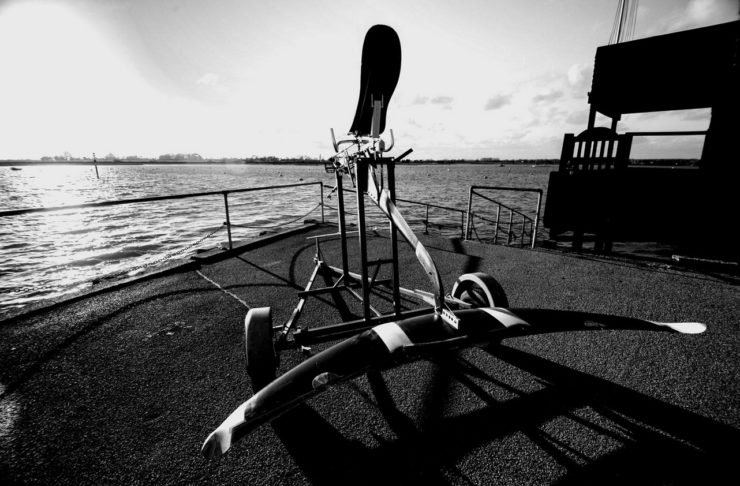
© Animal Dynamics
What do you get when you combine a veteran tech entrepreneur and a flight obsessed scientist? Well if those two individuals are Alex Caccia and Adrian Thomas you get a British startup spinoff from Oxford University, Animal Dynamics. While Alex may be the business expert, there is no question that Adrian is the intellectual driving force behind their innovative drone company. A man self proclaimed as being obsessed with flight since he was a young boy, Adrian now studies biomechanics.
The 56 year old Oxford Professor and Animal Dynamics co founder has had quite an interesting past. From building model planes as a child, to writing a dissertation on the tails of birds, to becoming a glider pilot, then in both 2006 and 2009 he became Britan’s paragliding champion. All of this has led him to become not only obsessed with flight, but to study how creatures have evolved over millennia to become the perfect flying structures. Applying this to science he is designing drones using the flight principals of birds and insects.
The design of drones based off of animal characteristics is not new. Companies like TechJet Inc created a drone called the Dragonfly, based on how a dragonfly maneuvers, which unfortunately failed. According to Guido de Croon of Delft University of Technology in the Netherlands, “The time is here for these technologies. But it’s still not easy, since flapping-wing flight is still much less mature than fixed-wing or rotorcraft flight.”
Thomas feels otherwise. “The design is very challenging and subtle,” he says. “But we have cracked the issues with lift generation and gust tolerance, and Skeeter flies outside nicely. We are currently working to increase the flight time, and increase its robustness and operating lifetime.” The Skeeter, as just mentioned, is one of 3 drones they are currently working on. The Skeeter is an drone that is about the length of a pen and is intended for military based operations. It resembles a dragonfly and is still in the testing phase.
Their second prototype is called the Stork, and of course, resembles a bird. It is more of a para-glider type drone. This drone is in the final testing stages and they expect it to be operational within the next year and a half. Their final project is a drone called Malolo. This is a water borne drone that has a structure like a fish including fins rather than a propeller. Oddly enough, it was a conversation about how fish move in the water between Alex and Adrian that prompted their collaboration when they first met at a party in 2013.
Since that party in 2013, Alex and Adrian have created a business that employs 44 people and has raised over $8 million with aid from the British Military. They are passionate about creating flying machines that will be just as successful as their animal inspiration.
|